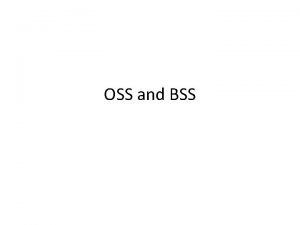Teacher Note These slides correspond to the visuals










- Slides: 10

Teacher Note These slides correspond to the visuals noted in the lesson Inflation and the Fall of the Roman Empire. © Copyright 2018, Federal Reserve Bank of St. Louis.

Inflation and the Fall of the Roman Empire Compelling Question How did the economic policies of the Roman emperors cause inflation toward the end of the Roman Empire?

Visual 1: Vocabulary (slide 1 of 2) Money: Anything widely accepted in exchange for goods and services. Money supply: The quantity of money available in an economy. Coin: Money, usually minted from some combination of metals. Currency: Money, usually made from some type of paper -like material.

Visual 1: Vocabulary (slide 2 of 2) Debase: To reduce something’s value; for coinage, to reduce the amount of precious metal in the coins but keep the face value constant. Inflation: A general, sustained upward movement of prices for goods and services in an economy.

Visual 2: Auction Results Round 1 Round 2 Auction item 1 Auction item 2 Auction item 3 Total

Visual 3: Debasement of Roman Currency

Visual 4: Spending Priorities Roman emperor Septimius Severus (AD 193 -AD 211) said this on his deathbed to his son and successor: Make the solders rich, and pay no attention to anyone else. SOURCE: Martin, Thomas R. Ancient Rome: From Romulus to Justinian. New Haven, CT: Yale University Press, 2012, p. 174.

Visual 5: Rising Wheat Prices NOTE: A sesterces was equal to one-fourth of a denarius. SOURCE: Boatwright, Mary T. , Gargola, Daniel J. and Talbert, Richard J. A. A Brief History of the Romans. New York: Oxford, 2006, p. 277.

Visual 6: Chasing Too Few Goods Upon hearing that another debasement of coinage was coming, a Roman official wrote this to his servant: Hurry, spend all my money you have; buy me any kinds of goods at whatever prices they are available. SOURCE: Martin, Thomas R. Ancient Rome: From Romulus to Justinian. New Haven, CT: Yale University Press, 2012, p. 174.

 Quel est le volume qui correspond chaque division graduée
Quel est le volume qui correspond chaque division graduée Telecom operations map
Telecom operations map Use developer tools to create custom visuals power bi
Use developer tools to create custom visuals power bi Alachua visuals llc
Alachua visuals llc Qar visuals
Qar visuals As visuals
As visuals Interpretive visuals
Interpretive visuals Power bi custom visuals programming language
Power bi custom visuals programming language Interpretive visuals
Interpretive visuals Qar visuals
Qar visuals Power bi custom visuals development
Power bi custom visuals development



















